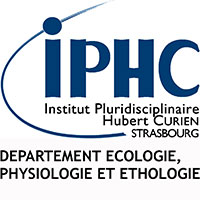Fine scale geographic residence and annual primary production drive body condition of wild immature green turtles (Chelonia mydas) in Martinique Island (Lesser Antilles)
Résumé
The change of animal biometrics (body mass and body size) can reveal important information about their living environment as well as determine the survival potential and reproductive success of individuals and thus the persistence of populations. However, weighing individuals like marine turtles in the field presents important logistical difficulties. In this context, estimating body mass based on body size is a crucial issue. Furthermore, the determinants of the variability of the parameters for this relationship can provide information about the quality of the environment and the manner in which individuals exploit the available resources. This is of particular importance in young individuals which growth quality might be a determinant of adult fitness.
Our study aimed to validate the use of different body measurements to estimate body mass, which can be difficult to obtain in the field, and explore the determinants of the relationship between body mass and size in juvenile green turtles. Juvenile green turtles were caught, measured, and weighed for six years (2011-2012; 2015-2018) at six bays in the west of Martinique Island (Lesser Antilles). Using different datasets from this global database, we were able to show that the body mass of individuals can be predicted from body measurements with an error of less than 2%. We built several dataset including different morphological and time-location information to test the accuracy of the mass prediction. We show a year and north-south pattern for the relationship between body mass and body measurements. The year effect for the relationship of body mass and size is strongly correlated with net primary production but not with sea surface temperature or cyclonic events. We also found that if the bay locations and year effects were removed from the analysis, the mass prediction degraded slightly but was still less than 3% on average. Further investigations of the feeding habitats in Martinique are still needed to better understand these effects and to link them with geographic and oceanographic conditions.
Origine : Fichiers produits par l'(les) auteur(s)
Loading...

